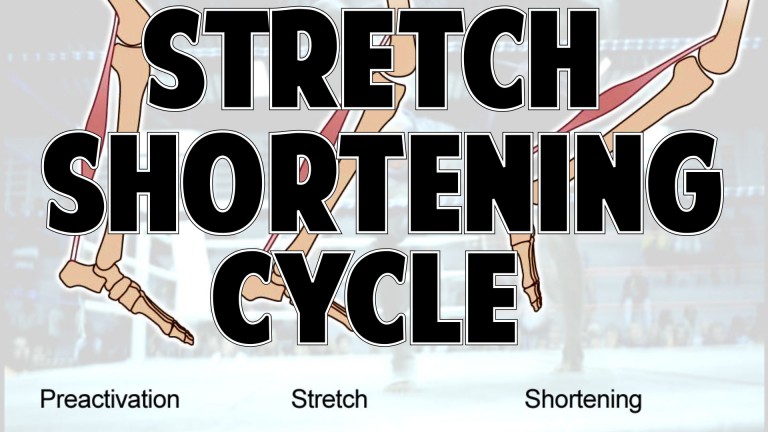
Stretch shortening cycle, a mechanism that will help any athlete to improve his/her athletic ability. The term stretch-shortening cycle (SSC) is referred to the pre-stretch (or countermovement) action that is commonly observed during typical human movements like jumping. This pre-stretch allows the athlete to produce more force and move quicker.
The SSC is comprised of three phases.

Phase I is the eccentric phase in which the (agonist) muscle group (s) involved in the movement is pre-stretched and elastic energy is stored in SEC (Series Elastic Components, includes muscular components & tendons) also stimulating the muscle spindle fibers which further sends a signal to spinal cord via Type Ia afferent nerve fibers (sensory fiber of muscle spindle) which will bring in stretch reflex to produce more power along with SEC.
Phase II is the transition time between the eccentric and concentric phases and is called the amortization phase. This starts from the end of the eccentric phase and ends at the initiation of the concentric muscle action. This phase of the SSC is considered to be the most crucial in allowing greater power production; therefore, its duration must be kept short. If the transition time lasts too long, the energy stored during the eccentric phase will be dissipated as heat, and the stretch reflex will not increase muscle activity during the concentric phase. During this phase the Type Ia afferent nerve fibers synapse with alpha motor neurons (responsible for skeletal muscle contraction) in the ventral root of spinal cord which further transmits signal to the agonist muscle group (s).
The phase III of SSC is called concentric phase and is the response to the previous two phases i.e. eccentric phase and amortization phase. Depending on the transition time, the energy stored in SEC during eccentric phase is either used to increase the force of the movement or is dissipated as heat (if amortization phase is longer). The stimulation of agonist muscle group(s) by alpha motor neuron results in stretch reflex which adds on to the force produced by using the stored energy. The force produced using the stored elastic energy during the concentric phase in SSC is way more than the force produced in an isolated concentric contraction.
SSC employs the energy storage capabilities of SEC as well as the stimulation of stretch reflex which facilitates the maximal increase in muscle recruitment over a minimal amount of time.
As said earlier, SSC Mechanism (or plyometrics) in Sports plays a very crucial role. Of many benefits of this type of training, here are few to list:
- Increased vertical jump height
- Increased long jump distance
- Increased strength
- Improved agility, quickness, speed
- Injury reduction
- Improved throwing, hitting, striking velocity
Although the exercise selection will completely depend on Athletic level, experience, sport of a particular athlete. Still, we are listing a couple of exercises to make it more clear for you.
Lower Body exercises:
- Squat jump
- Single leg hop
- Squat box jump
- Depth jump to second box.
Upper Body exercises:
- Chest pass (medicine ball),
- Depth push ups,
- Single arm throws,
- Two hand overhead throws.
Number of repetitions for lower body are counted as number of foot contacts with surface and for upper body it’s counted as number of throws or catches. Number of session may vary from once a week for a beginner to thrice a week for a professional athlete.
Reference: NSCA Essentials of Strength & Conditioning
Image Source: Human Kinetics







